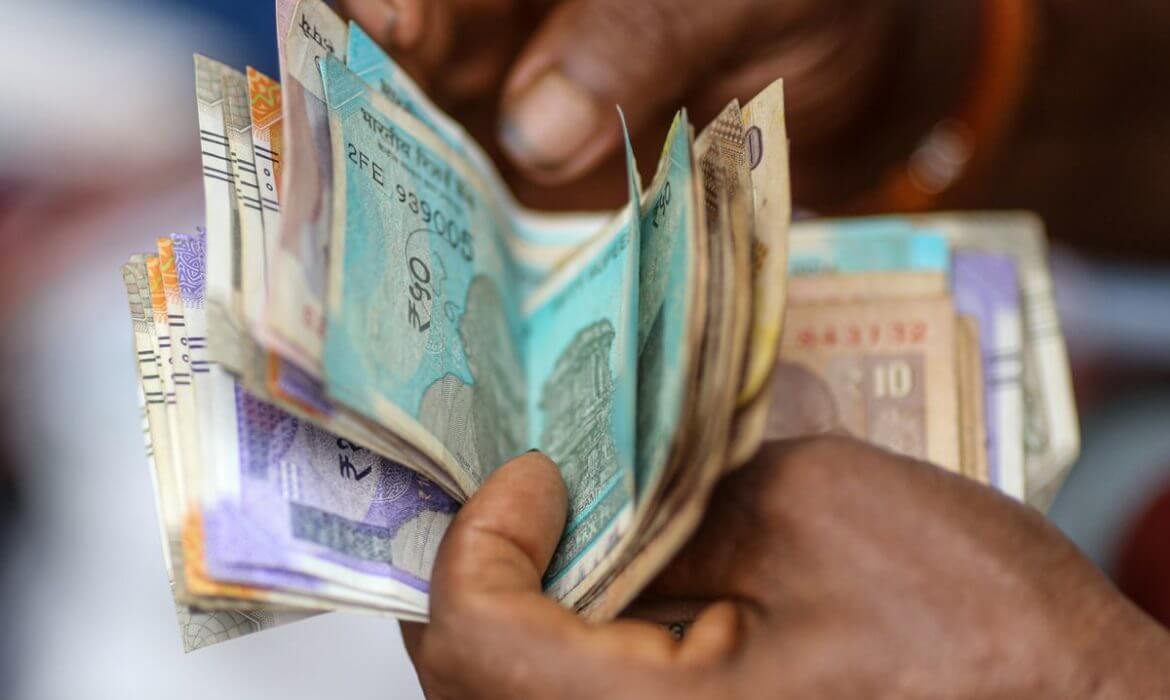Key Points:
- The Indian rupee dropped by 9 paise, settling at 83.43 per US dollar, reflecting ongoing currency market fluctuations.
- Oil prices rose by 0.52%, reaching ₹7126.76 per barrel, influenced by global supply constraints and geopolitical tensions.
- Key infrastructure sectors, a cornerstone of economic progress, grew by 6.3% in May, driven by coal, natural gas, and electricity production.
- The central government’s fiscal deficit was 3% by May 2024, influenced by the model code of conduct due to the Lok Sabha elections.
The Indian rupee experienced a slight depreciation, dropping by 9 paise to settle at 83.43 per US dollar. This shift, though minor, indicates the ongoing fluctuations in the currency market. A combination of external and internal factors continues to influence the rupee’s value, reflecting the dynamic nature of the global financial landscape. The opening rate of the rupee was noted at 83.39 per US dollar, showing a slight drop from the previous closing rate of 83.34 on Friday.
Brent Crude Futures: A Modest Rise
In the commodities market, Brent crude futures saw a modest increase of 0.52%. This bought the price to ₹7126.76 per barrel (equivalent to $85.44 per barrel). This uptick in oil prices can be attributed to various factors, including global supply constraints and geopolitical tensions. The rise in crude prices impacts the broader economy, influencing transportation costs, the Indian rupee and the prices of goods and services.
Forex Reserves: A Significant Jump
Several factors have supported the Indian rupee amid these fluctuations. Notably, the softening of the American currency and positive equity market sentiment have provided some relief.
Furthermore, a significant development in the financial sector is the notable increase in India’s foreign exchange reserves. For the week ending June 21, forex reserves jumped by ₹6807 crore (approximately $816 million), bringing the total reserves to ₹5452603 crore ($653.711 billion). This increase marks a recovery from the previous week’s drop, where reserves fell by ₹24372 crore ($2.922 billion) to ₹5445666 crore ($652.895 billion). The rise in reserves strengthens India’s economic stability and enhances its ability to manage external shocks.
Growth in Key Infrastructure Sectors in India
The key infrastructure sectors demonstrated robust growth, registering a 6.3% increase in May. Although slightly lower than the previous month’s figures, this growth was driven by healthy expansion in coal, natural gas, and electricity production. These sectors are crucial for the country’s industrial and economic development, providing essential resources and energy to various industries. The consistent growth in these areas underscores the resilience and potential of India’s infrastructure sector.
Fiscal Deficit: Monitoring the Trends
The central government’s fiscal deficit is closely monitored as the fiscal year progresses. By the end of May 2024, the fiscal deficit stood at 3%, influenced partly by the model code of conduct in place due to the Lok Sabha elections. This figure is crucial for understanding the government’s financial health and its ability to fund public services and development projects. The fiscal deficit’s impact on the economy can be far-reaching, affecting interest rates, investment, and overall economic growth.
Market Movements and Investor Activity
The domestic equity market reflected a positive sentiment with the BSE Sensex and NSE Nifty both experiencing gains. The BSE Sensex increased by 136.09 points (0.17%) to 79168.82. Moreover, NSE Nifty rose by 41.75 points (0.17%) to 24052.35. Foreign institutional investors were net sellers on Friday, offloading ₹23.09 crore worth of equities despite these gains. The dollar index, which measures the US dollar against a basket of other currencies, decreased by 0.23% to 105.30, further contributing to the nuanced movements in the financial markets.
Navigating the Financial Landscape in India
The recent developments in India’s financial sector highlight the complexities and interdependencies of global and domestic markets. From slight depreciation in the rupee and modest rises in crude oil prices to significant jumps in forex reserves and consistent growth in key infrastructure sectors, these events collectively paint a picture of a dynamic and resilient economy. As the fiscal year continues, monitoring these trends will be crucial for stakeholders, investors, and policymakers to navigate the financial landscape effectively.
















